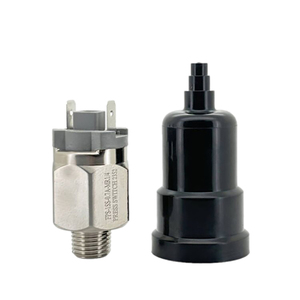Introduction to Pressure Switch Supply
A pressure switch supply serves as a crucial component in various industrial and commercial applications, acting as a safety mechanism and control device by monitoring and regulating pressure levels in numerous systems. These devices are widely utilized in fields such as HVAC, water treatment, and manufacturing, where maintaining appropriate pressure is essential for both operational efficiency and system safety. Understanding the types, functions, and features of pressure switch supplies is essential for effective use in your applications.
Types of Pressure Switch Supply
Pressure switch supplies come in various forms to cater to different operational requirements. The main types include:
- Mechanical Pressure Switches: Utilize a diaphragm or piston mechanism to detect pressure changes. Commonly used for basic on/off control.
- Electronic Pressure Switches: Employ advanced sensors and microprocessors for accurate readings and can provide additional features like digital displays and programmable settings.
- Adjustable Pressure Switches: Allow for customization of set points and hysteresis, making them ideal for varied pressure applications.
- Differential Pressure Switches: Monitor the difference between two pressure points, often used in filtration and fluid management systems.
Function and Feature of Pressure Switch Supply
The primary function of a pressure switch supply is to oversee pressure levels within a system and trigger actions based on predefined parameters. Key features include:
- Set Point Adjustment: Many models allow users to configure the operational set points according to specific needs.
- LED Indicators: Some pressure switch supplies come equipped with LED lights to provide visual status updates.
- Durable Housing: Quality pressure switches are often housed in robust materials, offering protection against harsh environments.
- Fail-Safe Mechanisms: Numerous devices are designed to activate alarms or shutdown processes when unsafe pressure levels are detected.
Applications of Pressure Switch Supply
Pressure switch supplies play an integral role in various applications across multiple industries:
- HVAC Systems: Used for regulating compressor pressure in heating and cooling systems.
- Water Systems: Essential for maintaining water pressure in pumps and tanks, ensuring optimal supply without surges.
- Manufacturing Equipment: Monitors hydraulic and pneumatic pressure levels in machinery to prevent equipment failure.
- Fire Protection Systems: Vital for monitoring pressure in sprinkler systems to ensure they function effectively during emergencies.
Advantages of Pressure Switch Supply
Integrating a pressure switch supply into your systems offers a range of advantages:
- Enhanced Safety: By continuously monitoring pressure levels, these devices prevent situations that could lead to equipment damage or safety hazards.
- Energy Efficiency: Automating control processes reduces waste and enhances the overall efficiency of the system.
- Cost-Effective Maintenance: Identifying pressure issues early with a pressure switch supply can prevent costly repairs and operational downtime.
- Versatility: With various types available, pressure switch supplies can be effectively used across a multitude of applications and industries.











































































































































































































